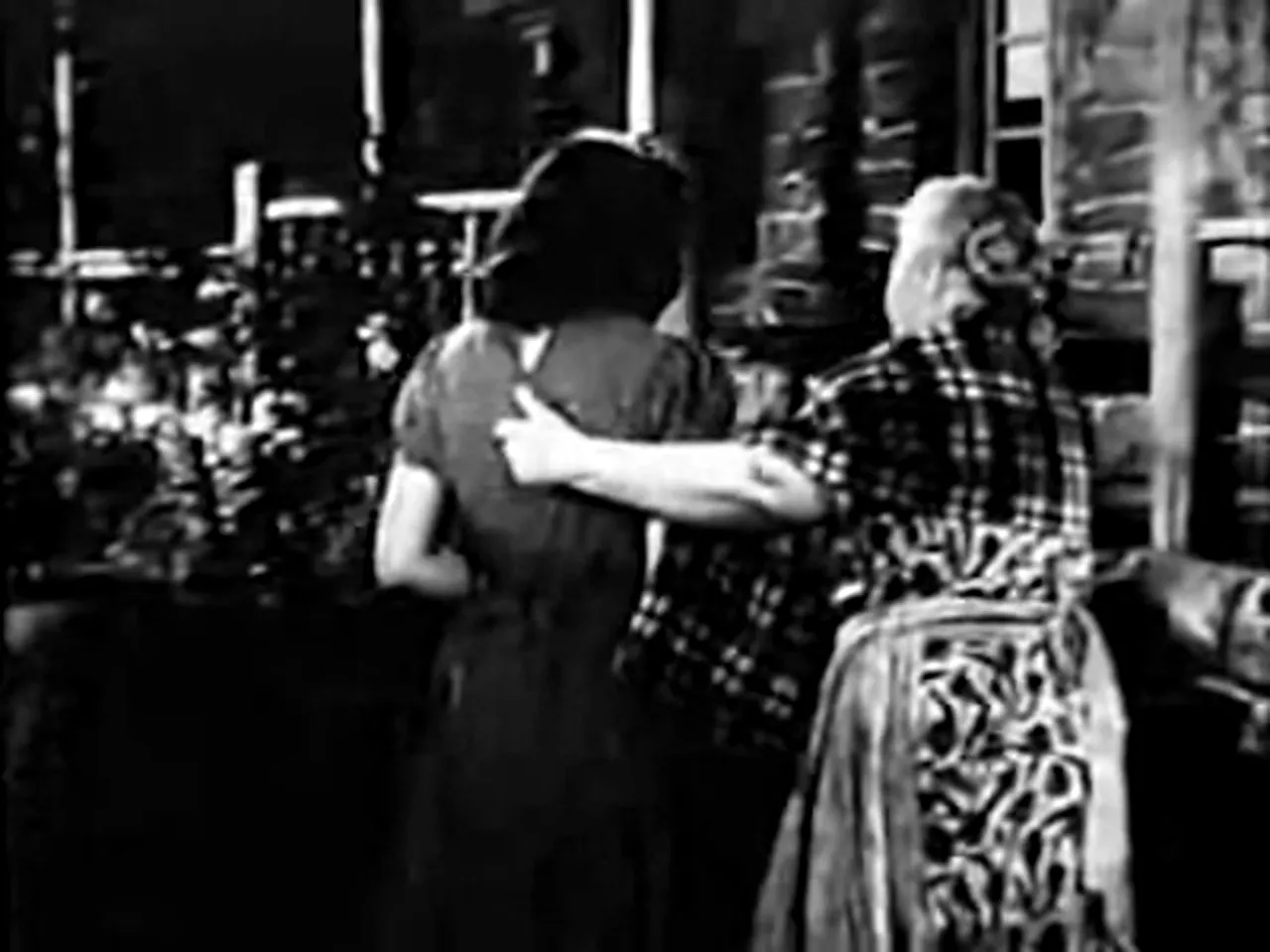For You I Die (1947), directed by John Reinhardt and scripted by Robert Presnell Sr., is a terse seventy-six minute study in moral complication, local hospitality, and the way ordinary people intersect with desperate men. Using the film and its cinematic record as primary sources, the critic examines how this modest entry in the postwar American cinema canon embodies the themes and textures that make a film noir movie both compelling and quietly humane.
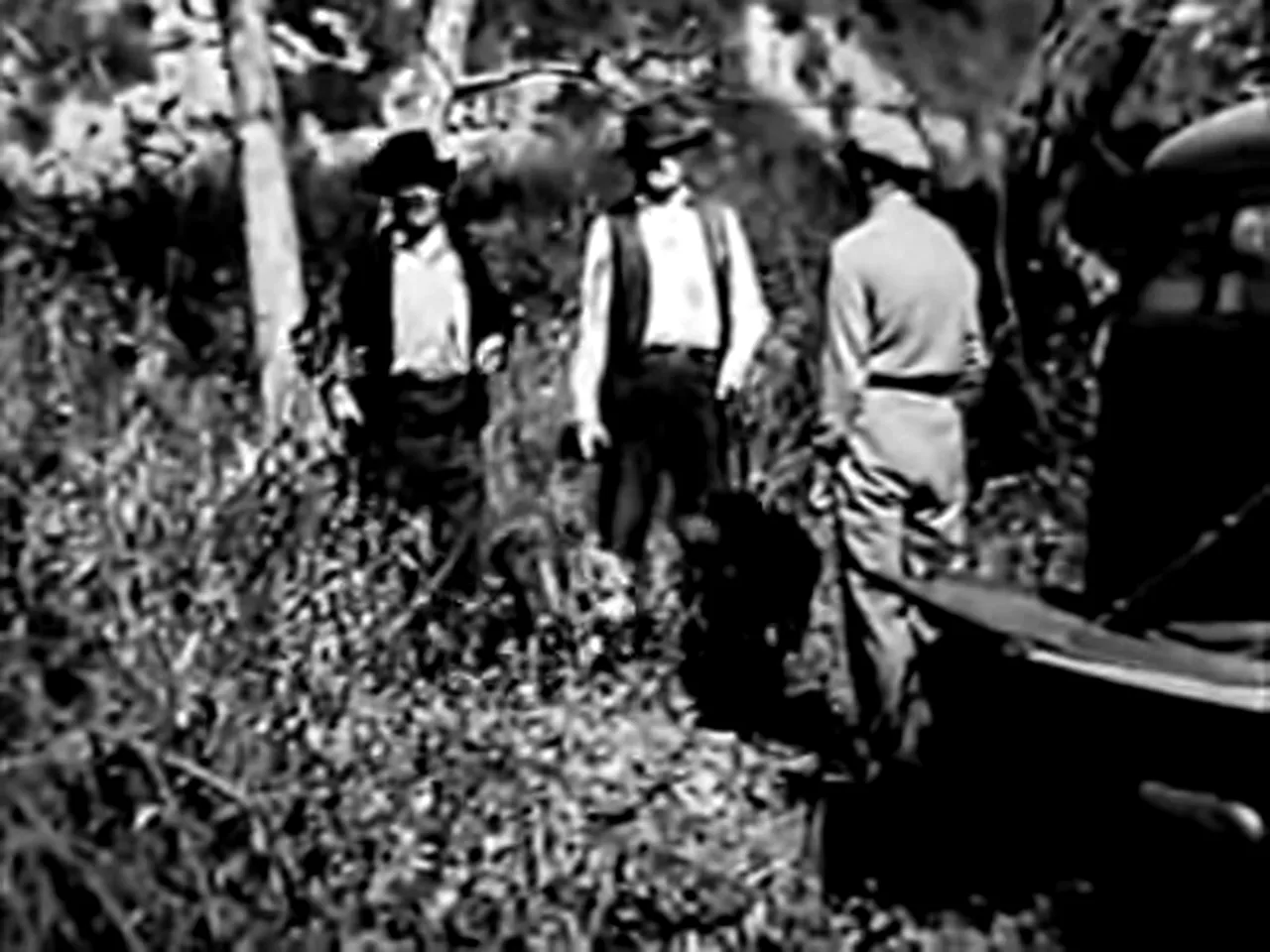
Outline of the essay
- Introduction: Why For You I Die matters as a film noir movie.
- Production context: Director, screenplay, and the team behind the picture.
- Plot and structure: The sequence of events and how the diner becomes a microcosm.
- Principal players: Analysis of performances and casting choices.
- Visual and sonic design: Cinematography, score, and mise-en-scène.
- Themes and motifs: Redemption, community, identity, and sacrifice in a film noir movie.
- Key scenes: Close readings of selected moments and lines.
- Legacy and availability: Where the film sits historically and how viewers can see it.
- Conclusion: The film’s continuing appeal as a film noir movie and its recommended audience.
Introduction: A restrained entry in the film noir movie canon
For You I Die arrives in the catalog of classic cinema as a modest, compact example of a film noir movie that prioritizes character study over spectacle. The picture was released in 1947 and is directed by John Reinhardt, who co-produced the film with Robert Presnell Sr., who also wrote the screenplay. The film stars Cathy Downs as Hope Novak and Paul Langton as Johnny Coulter, with Mischa Auer and Roman Bohnen rounding out an ensemble that anchors the story in a small roadside diner and its surrounding community.
From the outset, For You I Die identifies itself as part of the film noir movie family by combining fugitive motifs with ordinary, even folksy, settings: a roadside diner, a stolid proprietor, and a group of sympathetic townspeople who form an unlikely sanctuary. The film opens with police officers puzzling over two men who have "vanish[ed] in thin air" after a daylight prison break—an instant noir premise that promises danger and moral strain. The story that follows is less about violent pursuit than about the human consequences of desperation, the sheltering kindness of strangers, and the small, heroic gestures that amount to redemption.
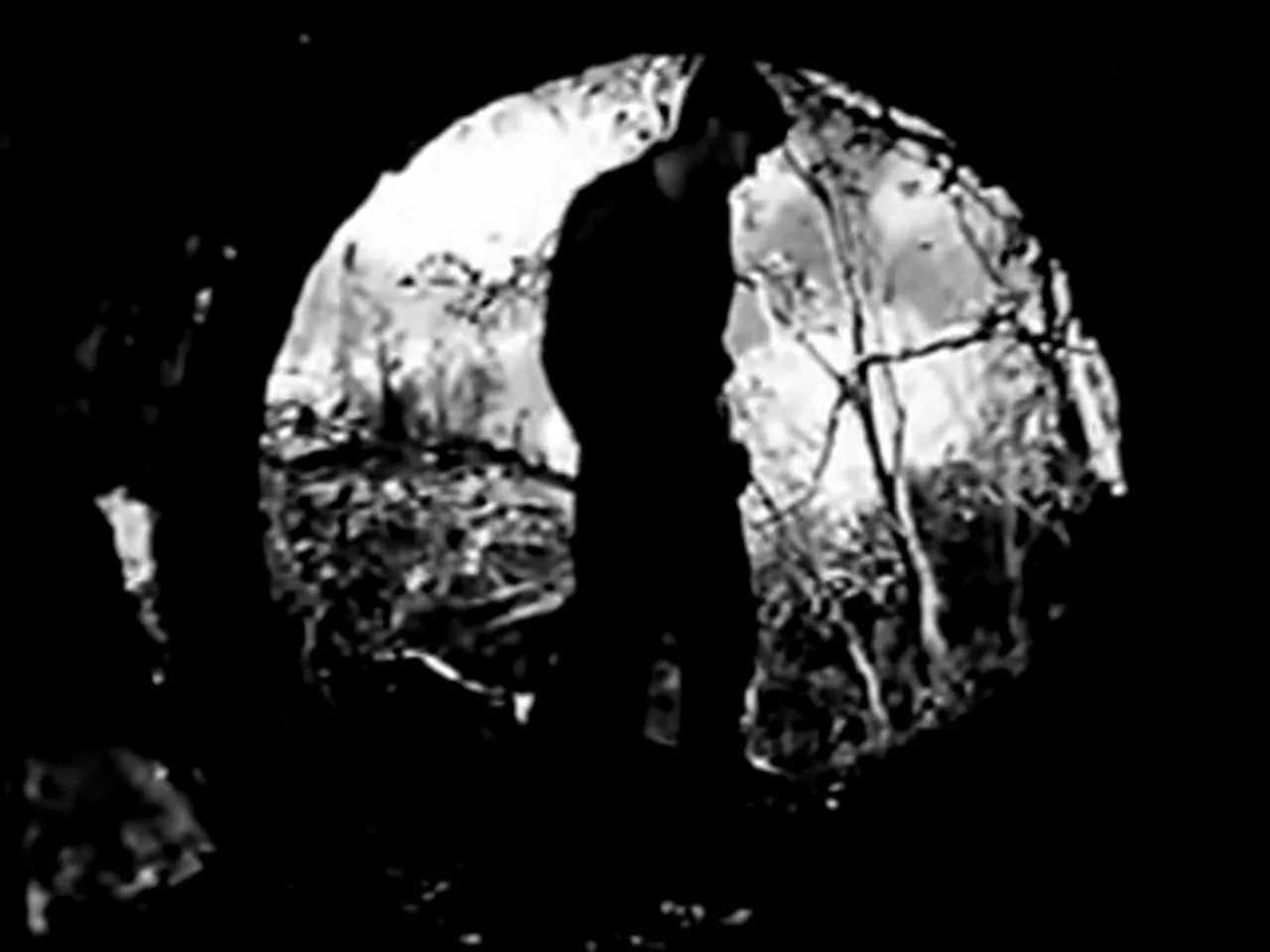
Production and context: The team behind the film noir movie
For You I Die was released in the United States on December 17, 1947. The film was produced by Arpi Productions, Inc., and distributed by A Film Classics Release. The credits list John Reinhardt as director, with Robert Presnell Sr. serving both as producer and screenwriter. William Clothier handled cinematography, Jason Bernie edited the film, and Paul Sawtell supplied musical direction and the score. The runtime is seventy-six minutes, and the film is in English.
This production profile is consistent with many mid-level studio-era features: a compact running time, efficient production, and a small but capable creative team. William Clothier’s cinematography—though not lavish—provides the film with its visual clarity, while Paul Sawtell’s score underlines the emotional beats without ever overwhelming the picture. The team allows the film to breathe; the script centers on character interaction and dialogue rather than action set pieces, which gives For You I Die a distinct voice among its contemporaries in the film noir movie field.
Plot and structure: A fugitive, a diner, and a fragile sanctuary
The narrative of For You I Die is elegantly simple. A convict is forced into a prison break and finds refuge at a roadside diner where he attempts to lay low. That premise, drawn from the film’s own synopsis, becomes the canvas on which themes of trust, identity, and second chances are painted. The diner and its proprietor—Maggie Dillon—along with a small ensemble of locals, become a protective community for Johnny Coulter, the fugitive, who must decide between flight, surrender, and the possibility of change.
The film begins with a police search and an early suggestion of the escapees' trail disappearing into the landscape: "Two guys break out of jail in a truck in broad daylight and vanish in thin air." This is a classic noir opening, but the story soon settles into the rhythm of the diner. The protagonist, Johnny Coulter, arrives at the Peach Blossom or similar roadside spot—he is a running man who becomes, in miniature, the story’s moral crucible.
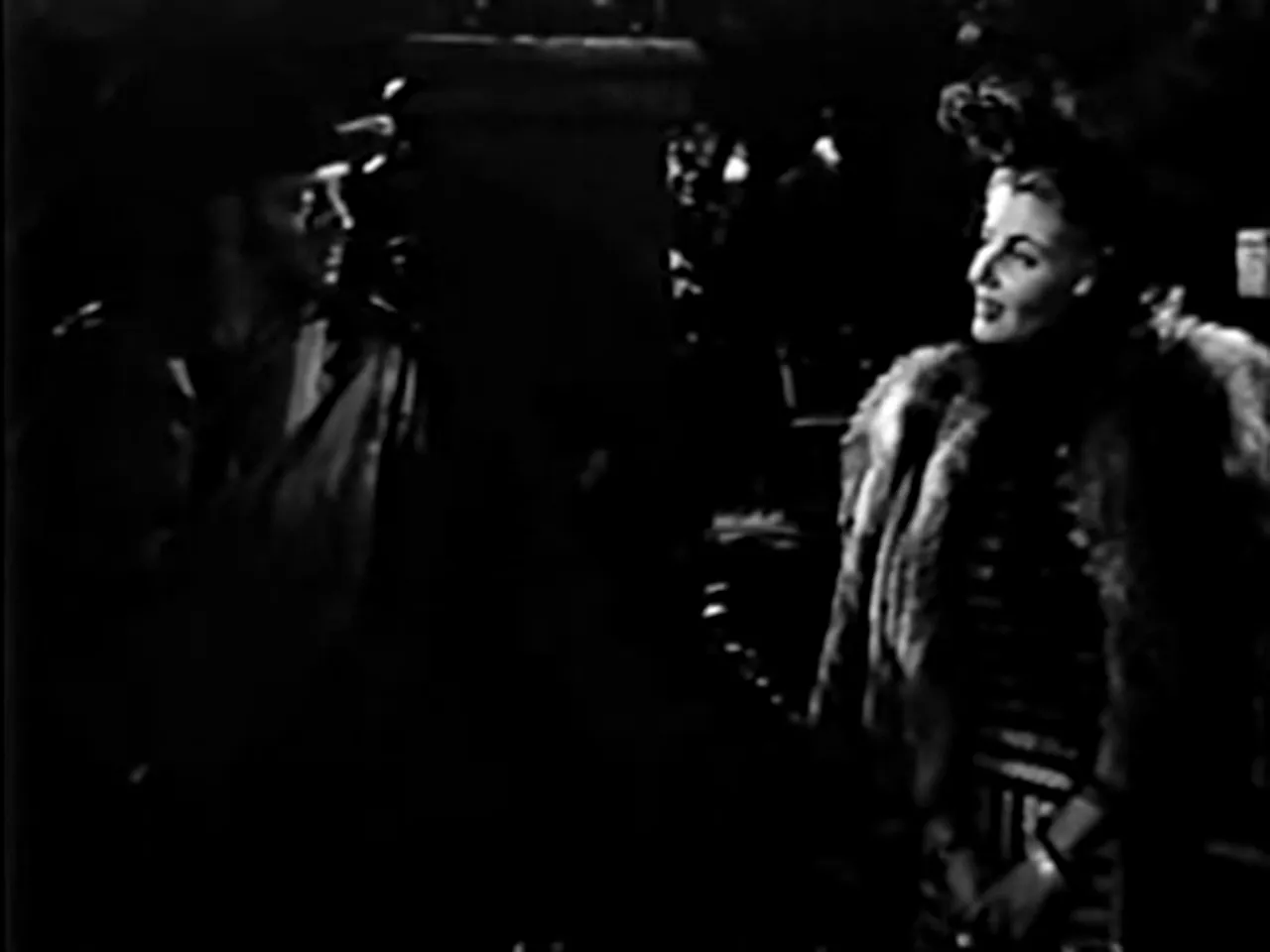
He is taken in by Maggie and her crew: Hope Novak, a young waitress with a complicated past; Georgie, a flirtatious presence; Smitty, a warm-hearted but troubled laborer; and the eccentric couple Alec and Louisa, whose comic relief underscores the humanity of the ensemble. As Johnny attempts to lie low, forces from his past—most notably the criminal Gruber—converge on the diner, testing the loyalties of the people who sheltered him. The plot’s movement from concealment to confrontation allows the film to reveal character rather than rely on set-piece violence. In that way, For You I Die commits to the quieter possibilities of the film noir movie.
Plot beats and pacing
The story divides itself into clear beats: the escape and initial search, Johnny’s arrival and integration into the diner community, the tension of possible recognition (especially after a local holds up the place for cash), the arrival of Gruber, the shooting and the tragic fallout, and finally the denouement in which Johnny’s status is clarified and the diner resumes its routine—altered, but intact. This pacing allows the film to inhabit a community as a living organism, where individual decisions ripple outward and redemption proves a communal effort.
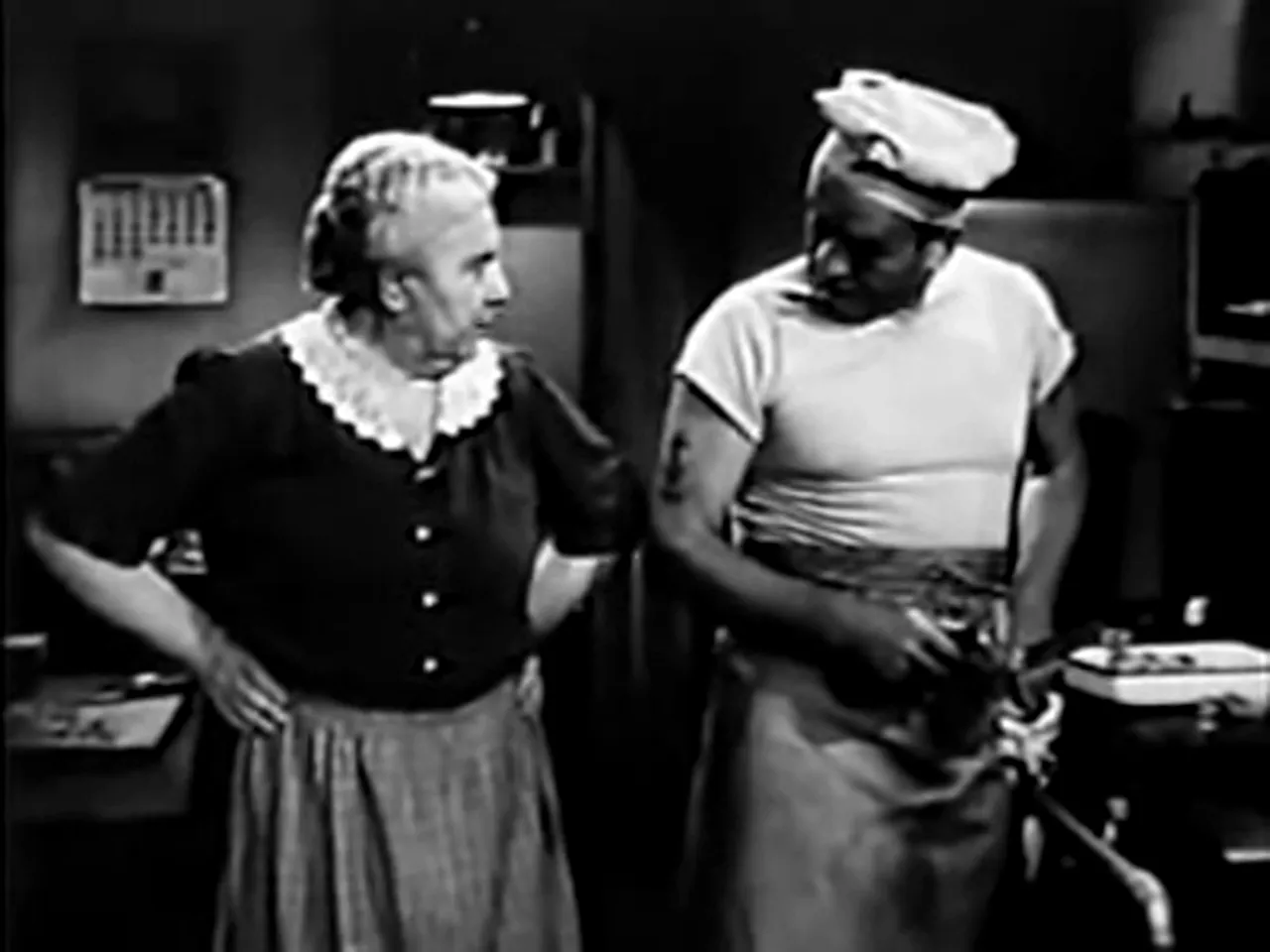
Principal players: Faces and performances that give the film noir movie its heart
For You I Die walks a line between performance styles. The leads present stoic restraint and vulnerable honesty. Paul Langton as Johnny Coulter offers a performance of contained torment; his portrayal of a man forced into criminal action but fundamentally unwilling to remain on a path of violence provides the film’s moral core. Cathy Downs’ Hope Novak is likewise restrained, simultaneously guarded and capable of warm empathy; she embodies the wounded yet decent feminine center that often appears in a film noir movie’s domestic sphere.
Mischa Auer’s Alec Shaw provides an eccentric counterpoint. Auer’s comic instincts—demonstrated in the transcript when he performs an impromptu, affectionate parody of the stage and insists "It's still me, Alex Shaw, at your service"—soften the film’s dramatic edges and contribute to the diner’s community atmosphere. Roman Bohnen as Smitty is the film’s emotional anchor: world-weary, sentimental, and ultimately heroic in small, human ways. Each performer helps transform the film from an exercise in suspense into a moral portrait.
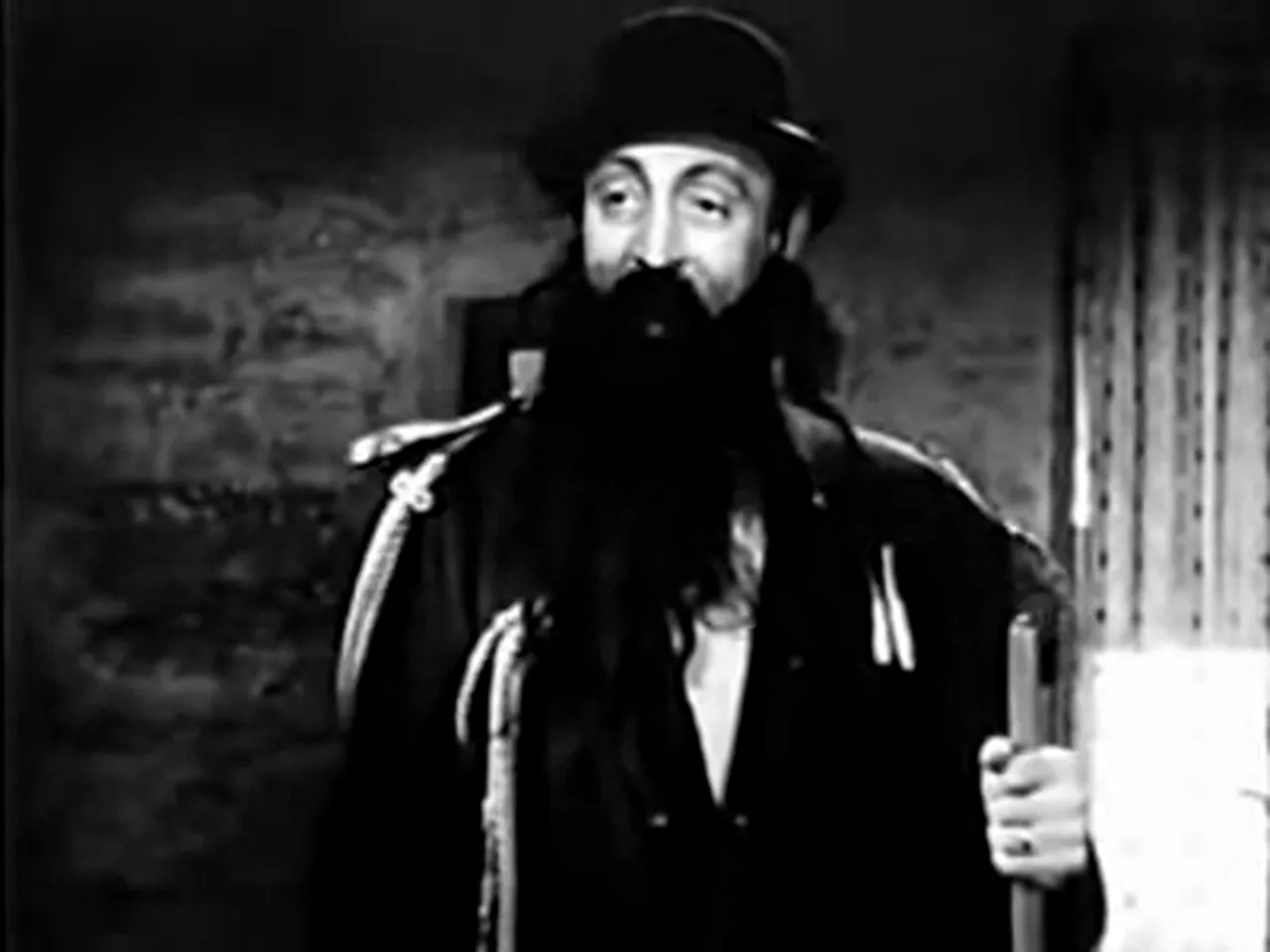
Notable supporting turns
The supporting cast—Jane Weeks as Georgie, Marion Kerby as Maggie Dillon, Manuela Callejo as Louisa—create a credible social world around the fugitive. Their interactions feel lived-in and authentic, and the film allows them moments of agency. Maggie, in particular, is not a mere backdrop; she is a woman who manages the diner, keeps the books, and cares deeply for the people under her roof. Her birthday party scene is both a communal celebration and a moment of fragile normalcy that the film noir movie denies only briefly before tragedy intrudes.
Direction, screenplay, and cinematic craft in a film noir movie
John Reinhardt’s direction keeps the film tight and character-focused. There are no superfluous sequences; every scene serves either to deepen character relationships or to heighten the sense of moral jeopardy. Robert Presnell Sr.’s screenplay is likewise efficient, alternating between gritty dialogue and tender, folksy moments that humanize the characters. The script balances the hard-edged necessities of a crime narrative with sympathetic depictions of ordinary lives, and that balance is precisely what distinguishes this film as a film noir movie with an unexpectedly human center.
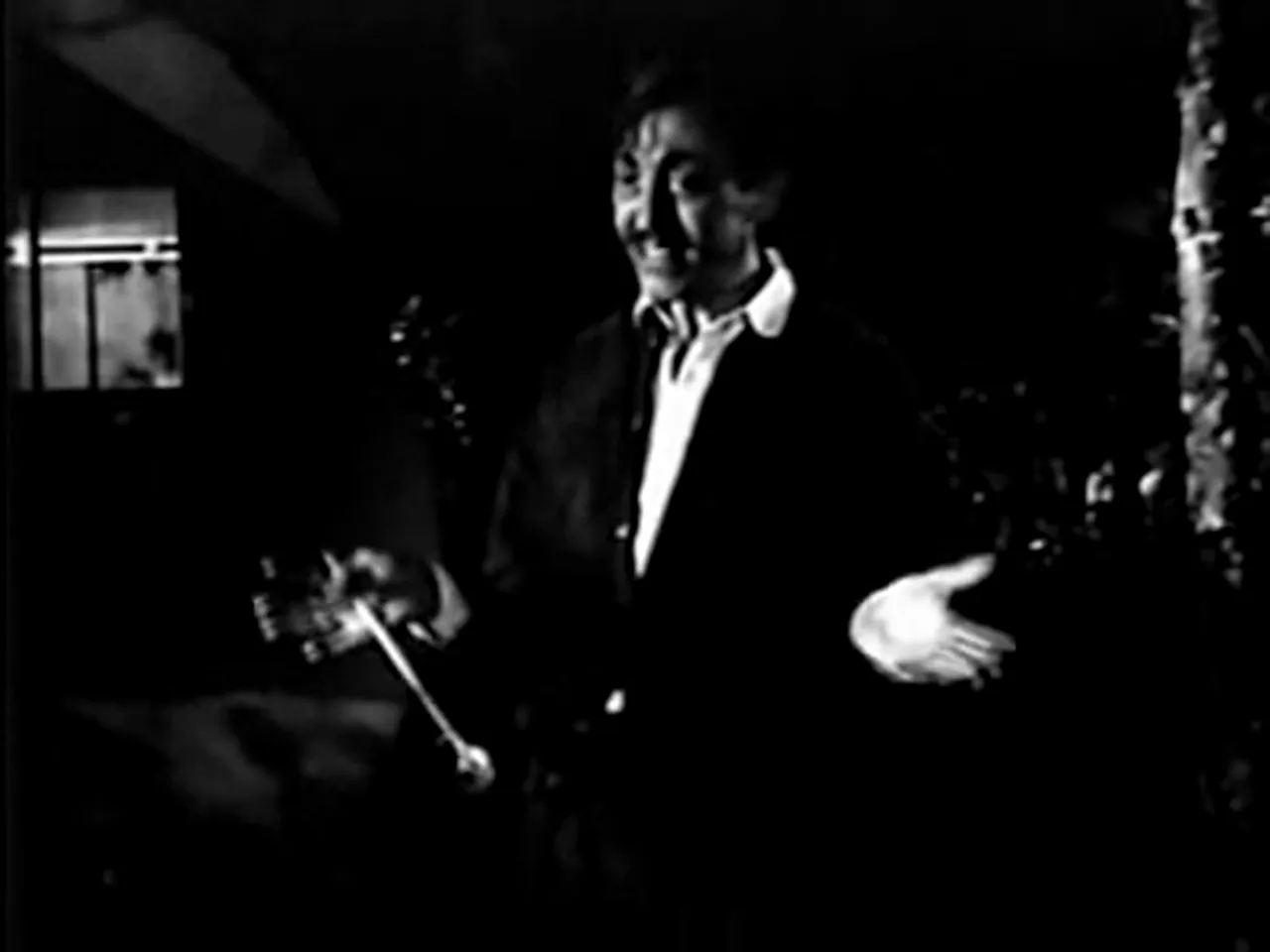
William Clothier’s cinematography is unobtrusive but effective: it frames interiors with clarity and uses light and shadow suggestively rather than ostentatiously. The diner, lit by practical fixtures and filtered daylight, becomes an interior world where choices are made and loyalties tested. Editor Jason Bernie’s cuts maintain narrative momentum while allowing scenes to breathe—party sequences, meals, and conversations play out at pace that allows empathy to accumulate.
Paul Sawtell’s musical direction supplies the score with emotional underscore. The music never intrudes; instead, it comments gently, underlining the film’s more reflective passages without imposing heavy-handed melodrama. This restraint is a hallmark of the film noir movie when it privileges mood and human detail over overt stylization.
Themes and motifs: What makes it a film noir movie of quiet moral force
Beyond the superficial markers of noir—an escaped convict, a violent associate, police pursuit—For You I Die explores themes that resonate long after the credits roll.
- Redemption and second chances: Johnny’s dilemma is not simply evasion, but whether he can accept a new life. He admits, "I didn't want to break out," and repeatedly insists on his reluctance. The film frames redemption as a possibility afforded by the community, not merely an individual act.
- Community as sanctuary: The diner functions as a communal crucible. Its inhabitants shelter Johnny and, in their small acts of care—feeding him, letting him work, offering gifts—create the conditions for moral reconsideration. Maggie’s maternal presence and the eccentric couple’s artful insistence that everyone deserves a piece of the star demonstrate the film’s belief in human decency.
- Identity and mistaken recognition: A recurrent motif is the danger of being seen. Georgie’s flirtation with boasting about being associated with Gruber, the conversation where someone confuses one woman for another, and the local scrutiny captured in the police officers’ early lines—"No trace of them"—all underline the peril that visibility implies in a film noir movie.
- Sacrifice and consequence: The tragedy that befalls Smitty and the ultimate decisions Johnny makes force the characters—and the audience—to confront the cost of compassion in a world where violence often returns.
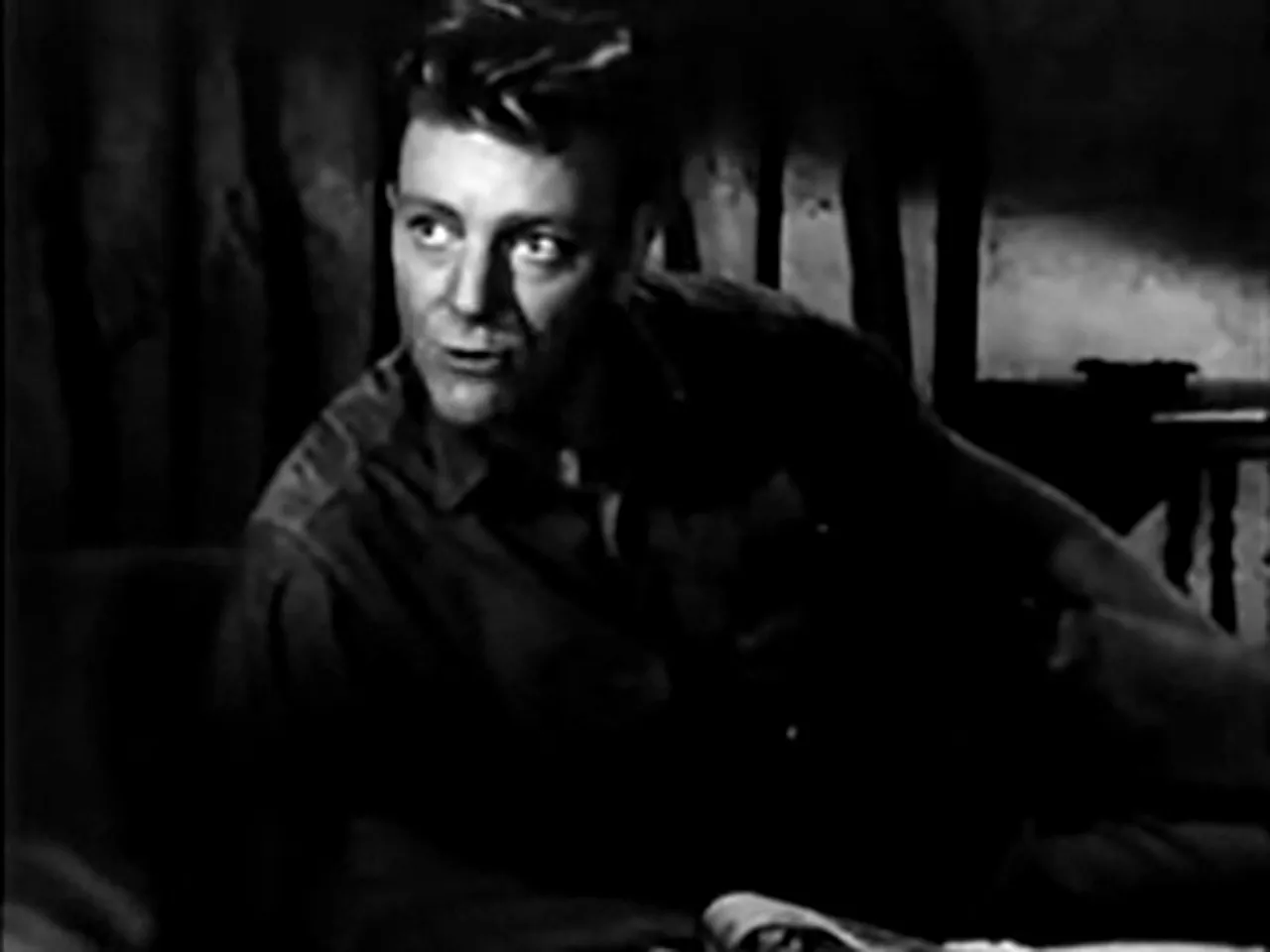
These themes sit comfortably within the film noir movie tradition, but the film emphasizes communal solutions to moral problems. Rather than fetishize fatalism, For You I Die leans into the idea that people can choose differently, even when the world seems to demand otherwise.
Notable quotations and their resonance
There are several lines in the film that crystallize its moral architecture:
"I didn't want to break out." (Johnny)
This direct declaration is the account of a man who insists his fate was coerced. The line grounds Johnny's moral plea in the simple language of refusal.
"The truth never killed anybody." (Hope)
The plea is strategically persuasive. Hope tries to persuade Johnny to surrender by asserting that truth will yield mercy. In the context of a film noir movie where truth is often a double-edged sword, that line captures the film's more optimistic counterargument: honesty as a path to redemption.
"There must be some good in you worth reaching for." (Maggie)
Maggie’s words articulate the film’s central ethic: that people’s best selves can be revealed through patient care and recognition rather than condemnation. It transforms the plot into a moral experiment.
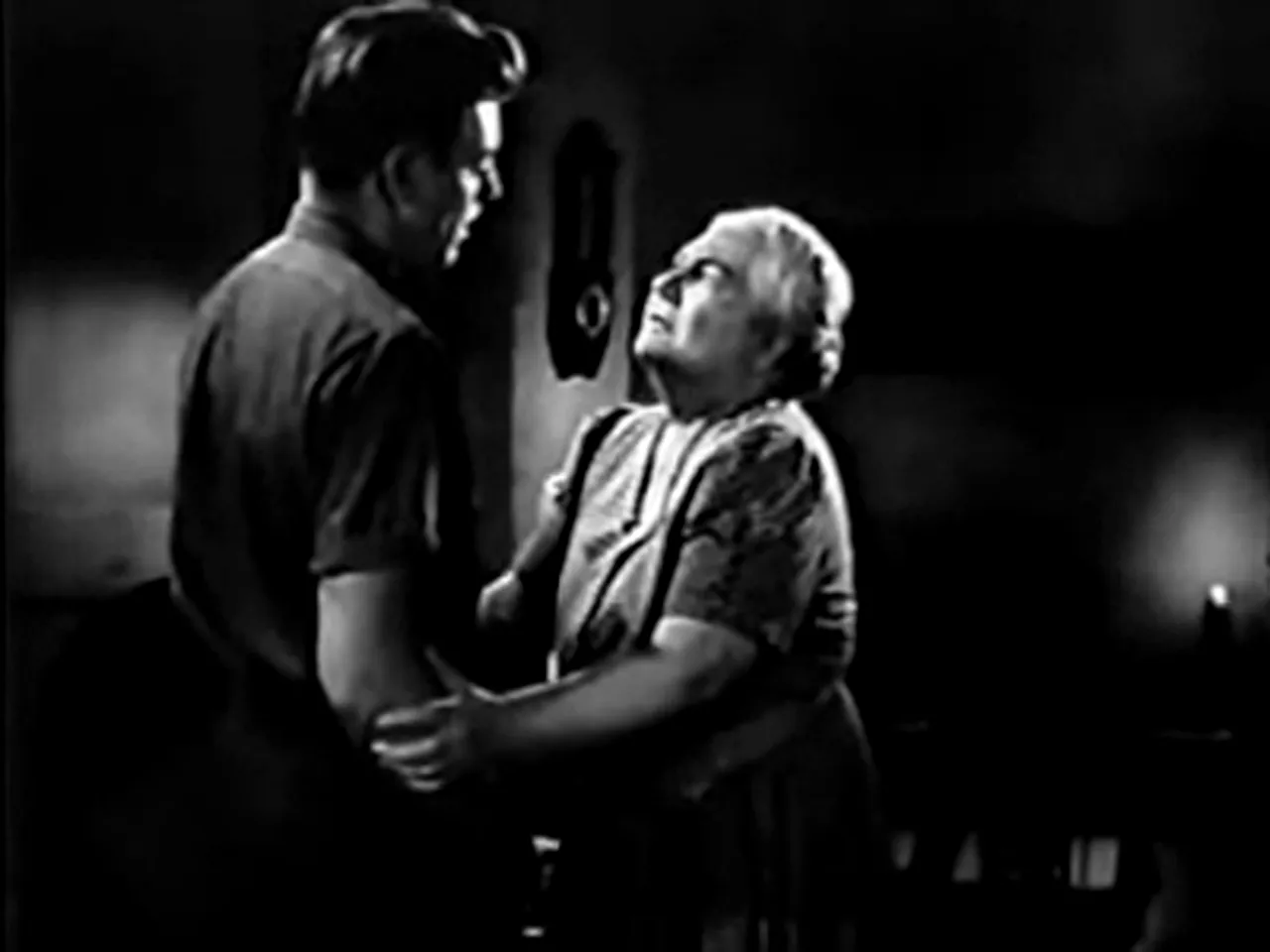
Close readings of key scenes: How For You I Die crafts meaning
Some scenes deserve closer inspection because they articulate the film’s character and emotional stakes in concentration. These moments highlight why For You I Die feels, despite its economy, like a fully realized film noir movie.
1. The opening search and the sewer escape
The film’s opening—police finding "no trace" and speculating that "the rain washed everything clean"—establishes the fugitive problem in specific, visual terms. After the escape, a man crawls from a sewer, exhausted and desperate. This sequence provides a visceral reminder that crime exacts physical, not merely legal, costs. The image of men disappearing into infrastructure—the storm drains and ravines—links human desperation to landscape, a noir convention that collapses social visibility into natural geography.
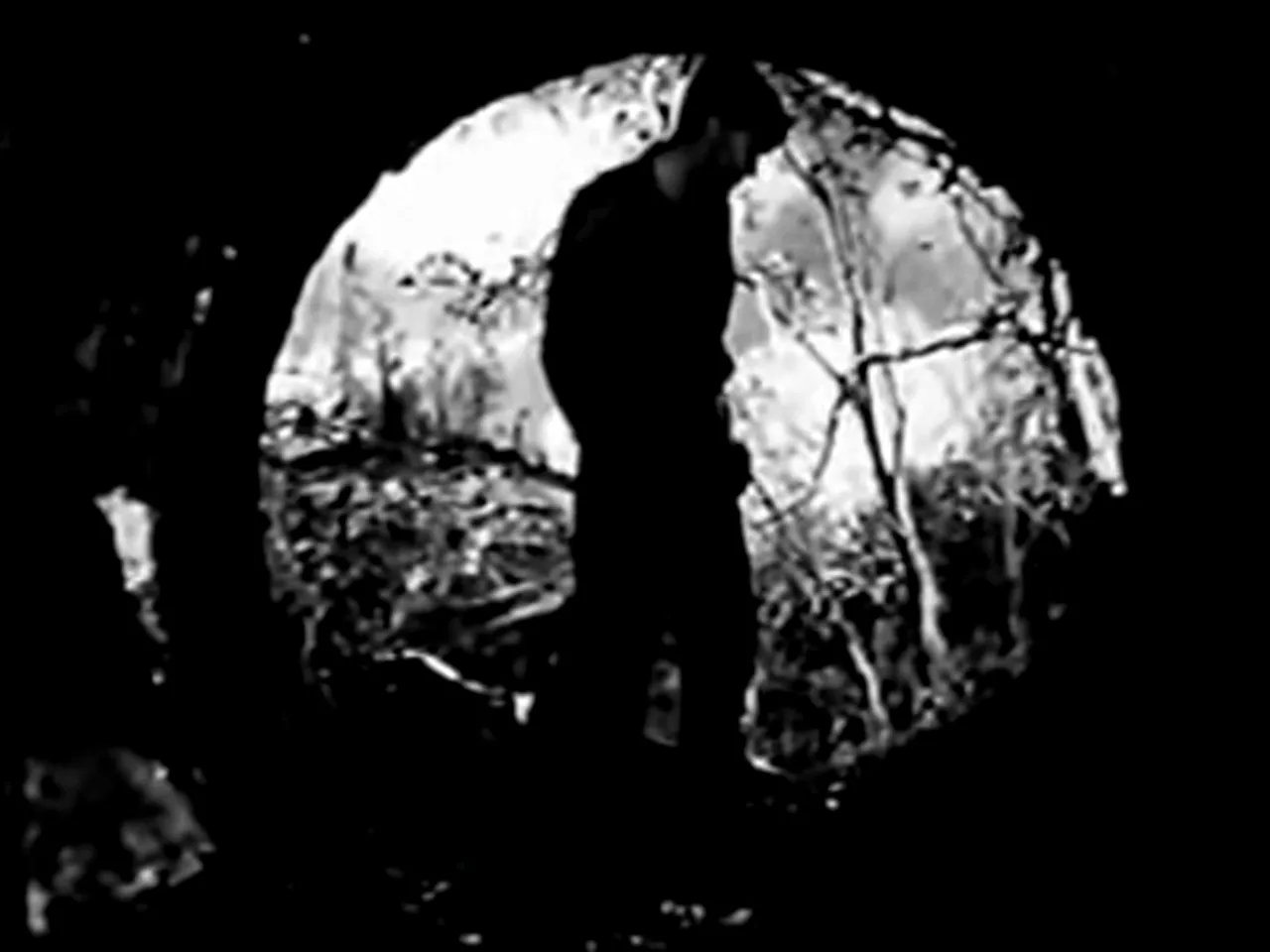
2. Arrival at the diner and domestic economy
Johnny’s arrival at Maggie’s diner is not cinematic spectacle but domestic negotiation. He pleads hunger, tries to pay, and slowly becomes an employee. The diner’s world—its bickering, affection, and rituals—functions as a micro-society. The film lingers on coffee cups, a sign-in book, and the exchange of two dollars for a cabin, all concrete details that root the film in tactile reality. This setting allows a film noir movie to be both a study of crime and a study of ordinary life’s capacity to heal.
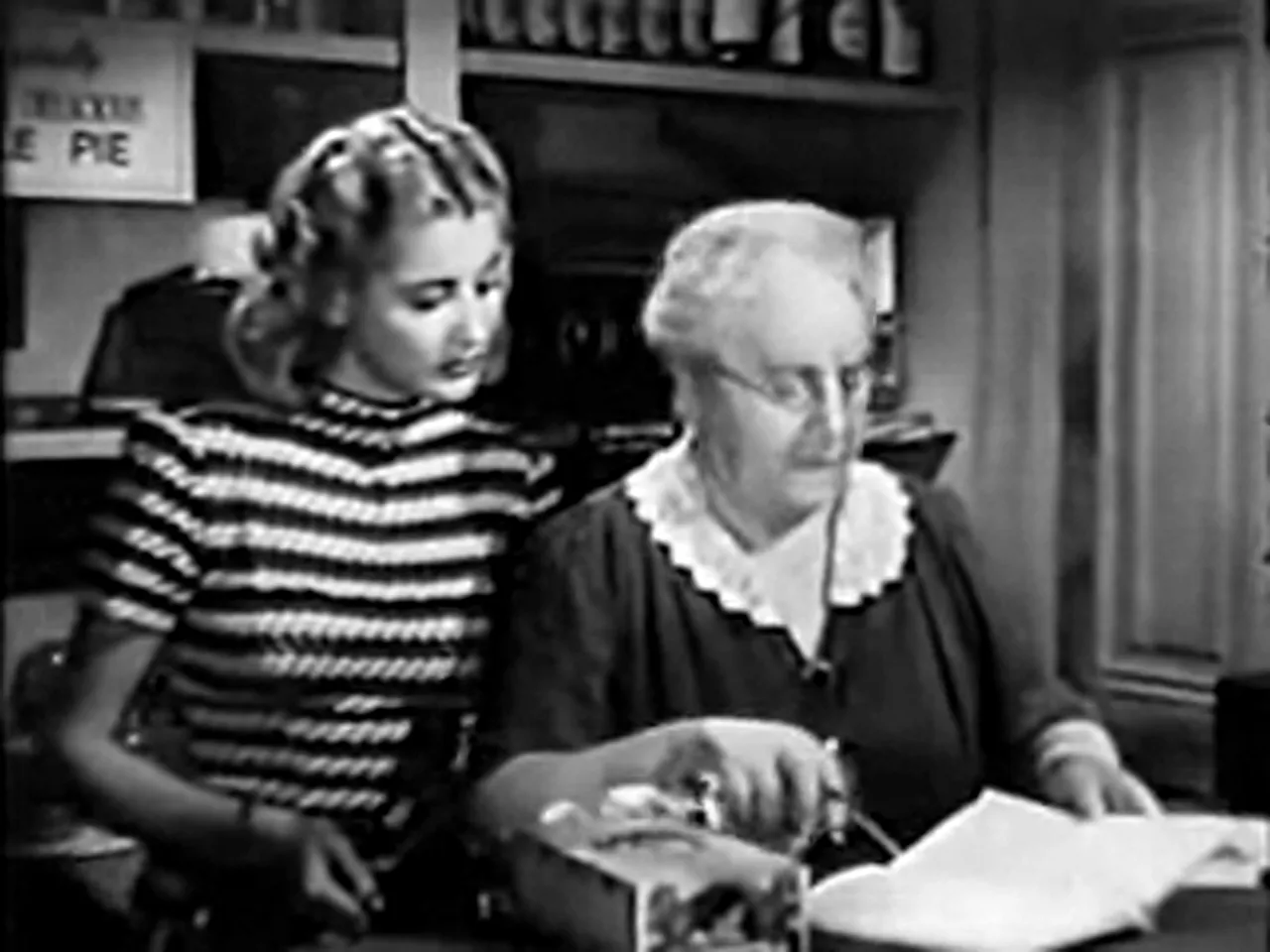
3. Alec Shaw’s comic interludes
Mischa Auer’s Alec brings a comic, theatrical sensibility into this quasi-noir environment. His rehearsed stage patter about "fanfare" and the broom’s purple handle might seem incongruous, but his artfulness proves essential: it humanizes the world and provides a buffer against relentless doom. Where many film noir movies wallow in irony, Alec’s theatricality offers a reminder that art and personality persist even in menial settings. Auer’s performance anchors the film’s warmth and invites the audience to see the diner as a place of human resilience.
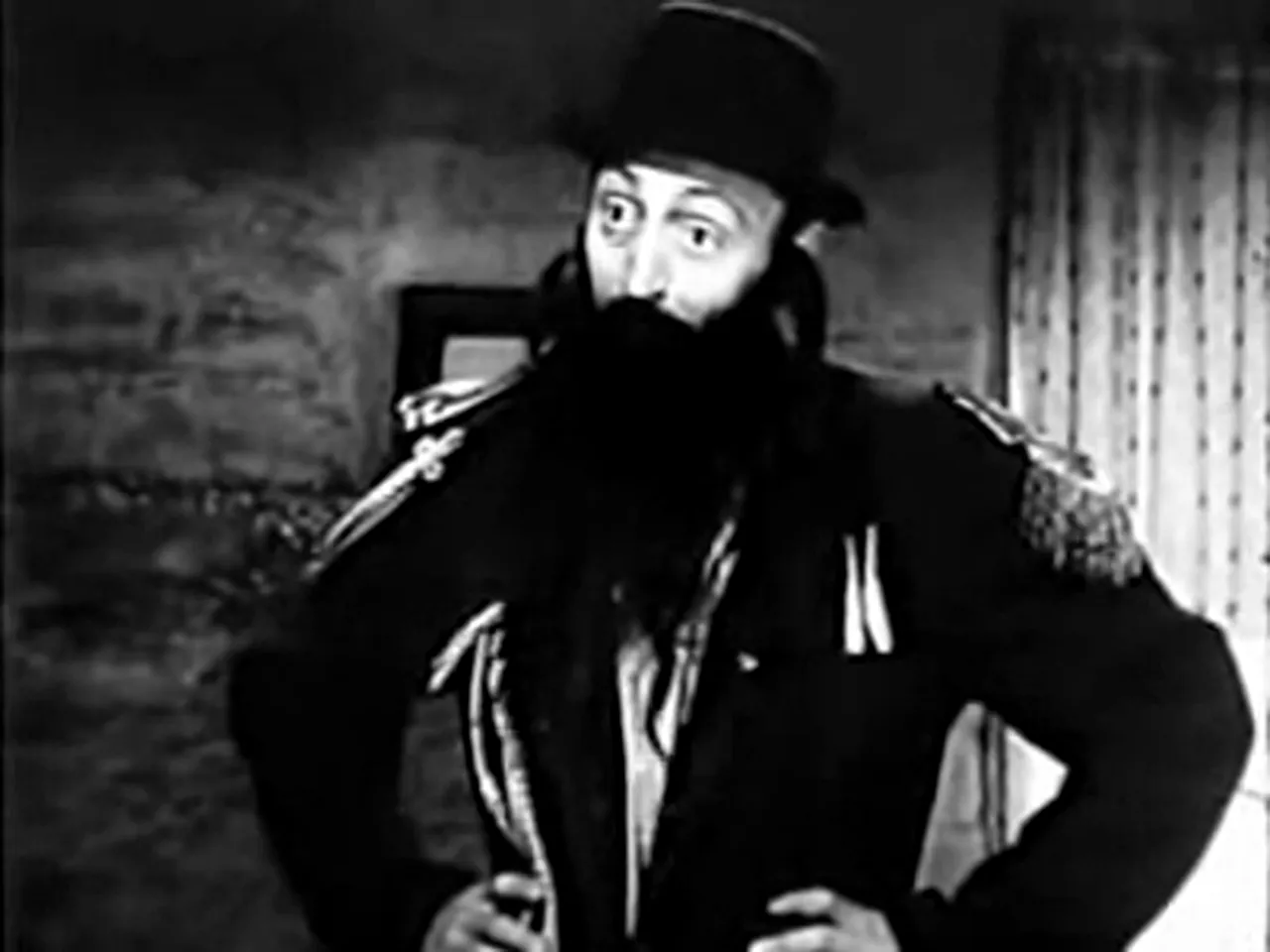
4. The hold-up and Johnny’s moral test
A violent stick-up at the diner functions as a narrative catalyst. Johnny steps in, retrieving the stolen money and thereby revealing brave resourcefulness and latent honor. The stick-up exposes a paradox typical of a film noir movie: criminality appears in multiple forms—professional thieves, desperate locals, culpable authorities—and the boundaries are porous. Johnny’s choice to act for the common good complicates the audience’s perception of him as merely an escaped convict; his actions suggest that the man’s interior moral life may yet be redemptive.
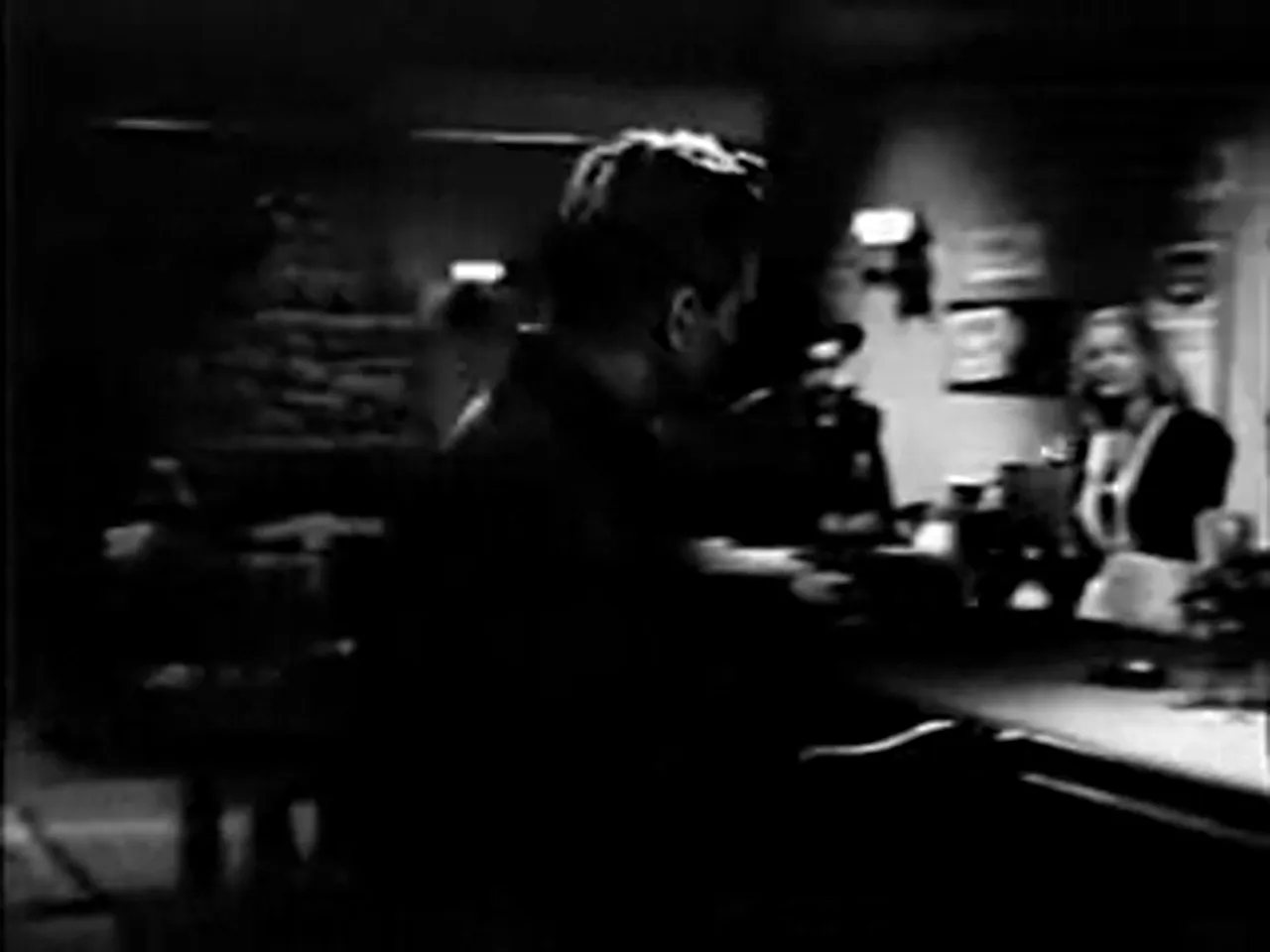
5. The arrival of Gruber and the climactic violence
Gruber’s arrival ratchets up the stakes. His presence brings back the dangerous world Johnny attempted to escape. The confrontation leads to confusion, gunfire, and the tragic wounding of Smitty—an outcome that carries the moral weight of the film’s message. Violence returns despite the diner’s sanctuary, and the cost is steep: Smitty’s death is a sobering indictment of a world where acts of compassion carry risk. The film does not sentimentalize Smitty’s end; it acknowledges the price while maintaining the dignity of his character.
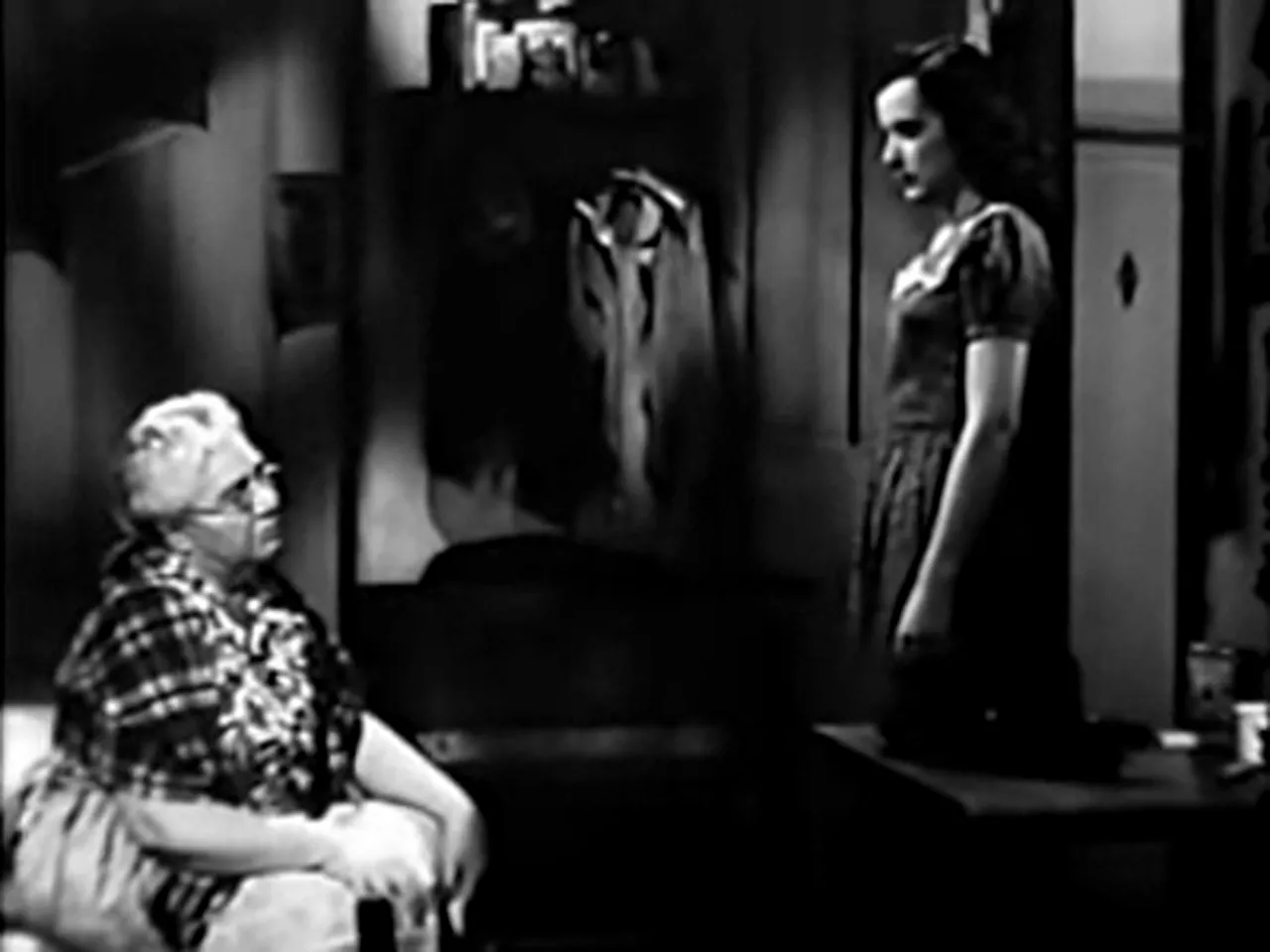
6. The denouement: confession, return, and hope
The film closes by resolving Johnny’s status. The authorities realize he had little choice in the initial escape; he is permitted to return and finish his sentence. That resolution—a year left to serve—does not offer full liberty, but it does offer proportional justice rather than condemnation. Maggie’s plans to refurbish the diner and Johnny’s promise of eventual return emphasize continuity: small plans for the future and repair after calamity. For a film noir movie, one more accustomed to final cynicism, the ending is surprisingly humane and forward-looking.
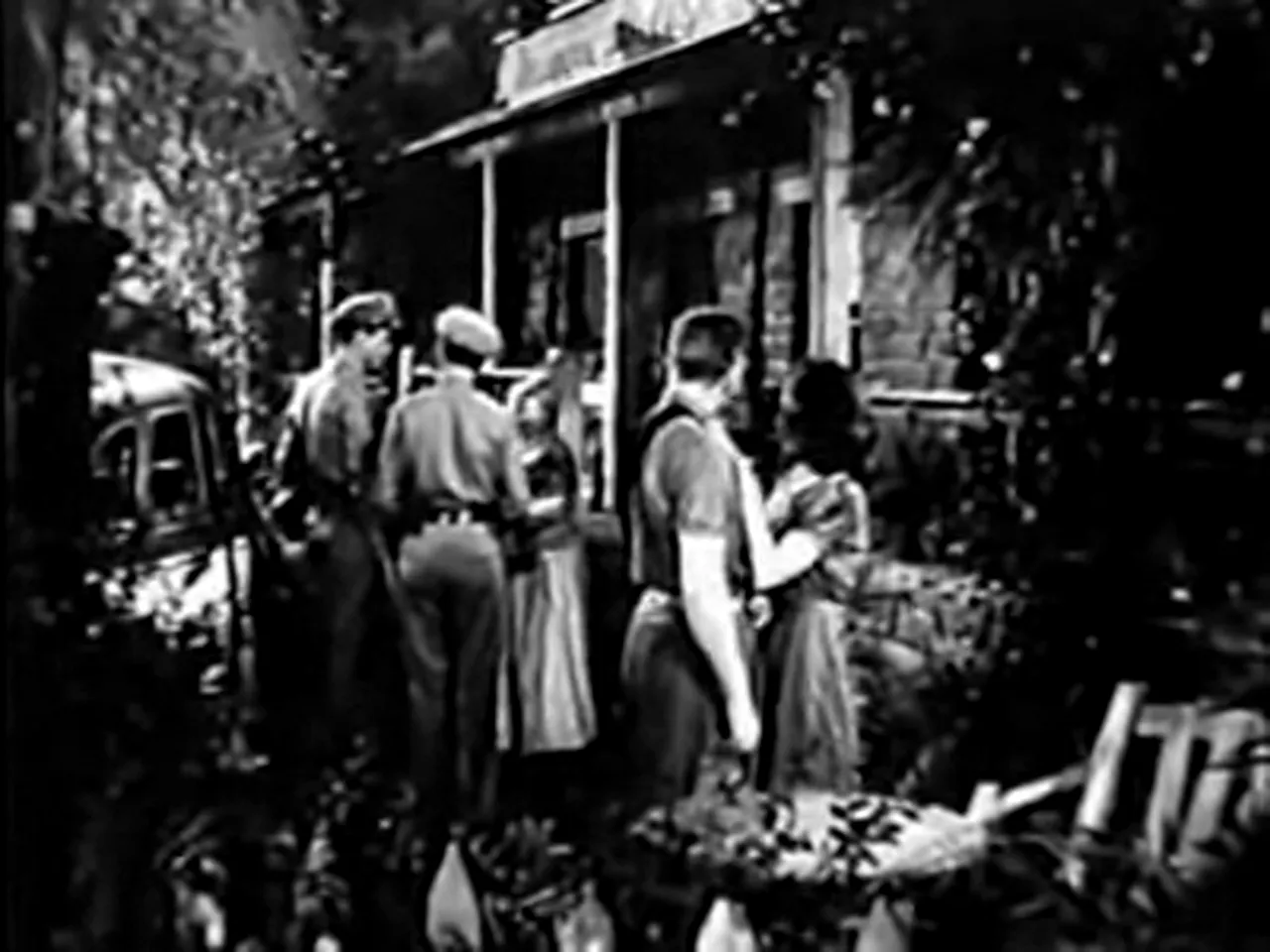
Cinematic style: lighting, camera, and sound in a film noir movie
A technical analysis reveals a picture designed to support its themes rather than to dazzle. Clothier’s cinematography favors straightforward framing with occasional noir-inflected shadows. The film avoids extreme high-contrast chiaroscuro; instead, it employs functional lighting that supports the intimacy of the diner interiors while allowing night exteriors to embrace the ambiguous world outside. Editing choices maintain narrative clarity; the film’s rhythm prioritizes psychological exposition and dialogue over montage or flashback.
Paul Sawtell’s score is a classic example of mid-century film scoring: underscoring that enhances without intruding. It colors emotional moments—lost hope, tender confession, communal celebration—while leaving the viewer free to process performances. The result is a film that feels balanced: stoic in its narrative reserve, humane in its emotional reach, and attentive to the possibilities of everyday heroism. Those qualities mark it as a film noir movie of gentle moral insistence.
Where the film stands historically: the film noir movie in context
For You I Die emerged in 1947, when film noir was consolidating as an American cinematic sensibility. Postwar anxieties about identity, displacement, and social reintegration find expression in many noir films of this era. Reinhardt’s film approaches these anxieties through the story of a man who is, in effect, in transit from one social status to another. The escape, the sheltering community, and the eventual legal reckoning reflect postwar uncertainties about belonging and the possibility of fresh starts.
Unlike more famous noir titles that emphasize stylistic excess, For You I Die is restrained; it is a film noir movie that privileges human connection. That quality makes it an instructive example for viewers interested in how noir themes can appear in smaller, more domestic contexts. The film is less about the big city’s corrosive labyrinth and more about the small-town moral economy that can either save or condemn an individual.
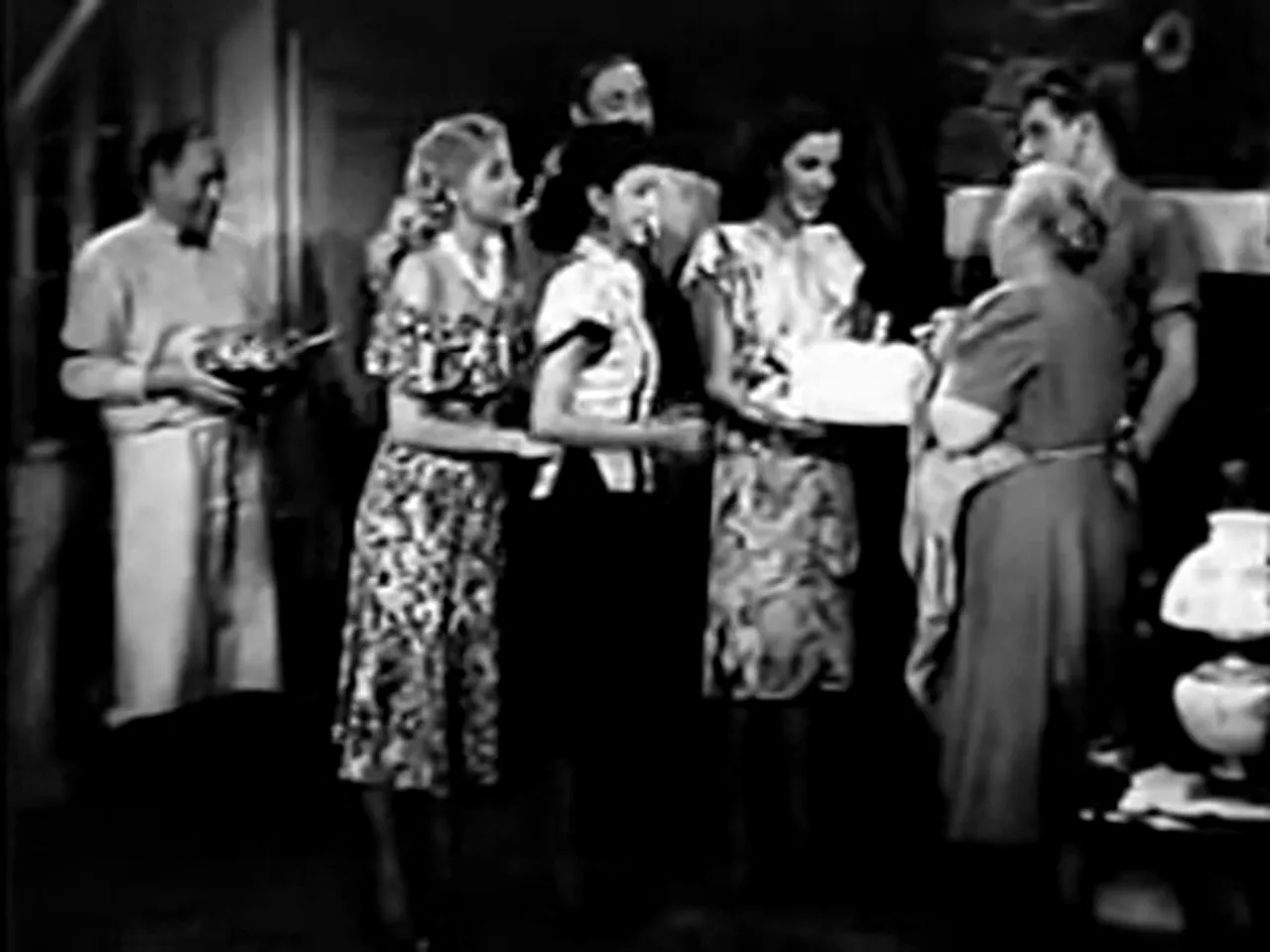
Availability, preservation, and further reading
According to the public record, For You I Die is a film whose distribution history places it among accessible mid-century titles. The film is referenced in the AFI catalog and exists in public archives; it is listed on databases such as IMDb and the TCM Movie Database. It has been noted for availability on public domain platforms, which makes it accessible for contemporary viewers and scholars alike. For readers and cinephiles wishing to view the film, archived collections and classic film repositories are the most direct avenues for access.
It is worth noting that works like this—modest, efficient, and character-forward—are invaluable teaching objects for those studying the film noir movie as a genre that can adapt to various scales. A viewer seeking to understand the genre beyond its urban, stylistic extremes will find For You I Die both representative and refreshingly humane.
Critical interpretation: how the film noir movie interrogates moral agency
For You I Die posits an ethical question: to what degree are people condemned by circumstance rather than culpability? Johnny’s repeated insistence—"I didn't want to break out"—frames the film’s inquiry. Characters around him choose whether to believe, shelter, turn away, or betray. The diner’s inhabitants choose largely to believe and protect, despite risk. This choice suggests an optimistic thesis: that social empathy can act as a counterforce to systemic violence.
Unlike noir protagonists whose moral ambiguity leads to inevitable downfall, Johnny is given a path—an imperfect but clear route—to accountability. That treatment complicates standard noir fatalism and argues for a softer, communal answer to personal guilt. The film thus occupies a liminal place in the film noir movie taxonomy: it contains the noir elements of crime and surveillance but resolves them through collective care rather than pure pessimism.
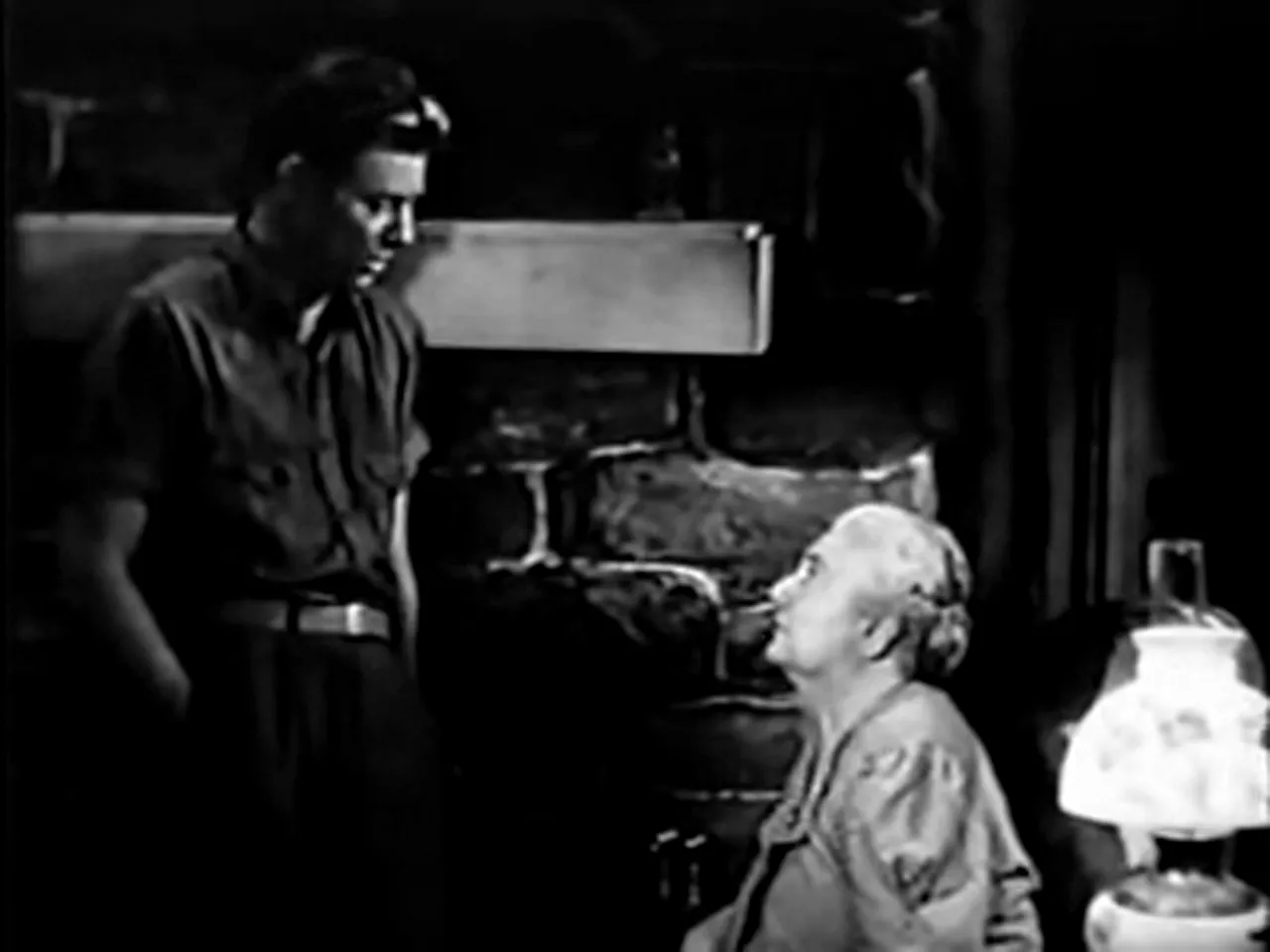
Why the film matters: a closing appraisal of the film noir movie
For You I Die may not be the most stylized or celebrated example of a film noir movie, yet it deserves attention for several reasons:
- It demonstrates how noir themes—crime, pursued fugitives, recognition—work within a small-scale, community-centered narrative.
- It offers performances that balance restraint and warmth, enabling sympathetic engagement with morally compromised characters.
- It provides a version of moral reckoning that privileges communal responsibility rather than inevitable doom, expanding the range of what a film noir movie can express.
- It serves as a document of postwar cultural anxieties while suggesting a possible route towards repair and accountability.
Viewed today, the film offers a reminder that noir’s moral complexity need not always end in cynicism. This film noir movie argues, instead, for the possibility that ordinary people—through kindness, stubbornness, and occasional courage—can create conditions for change.
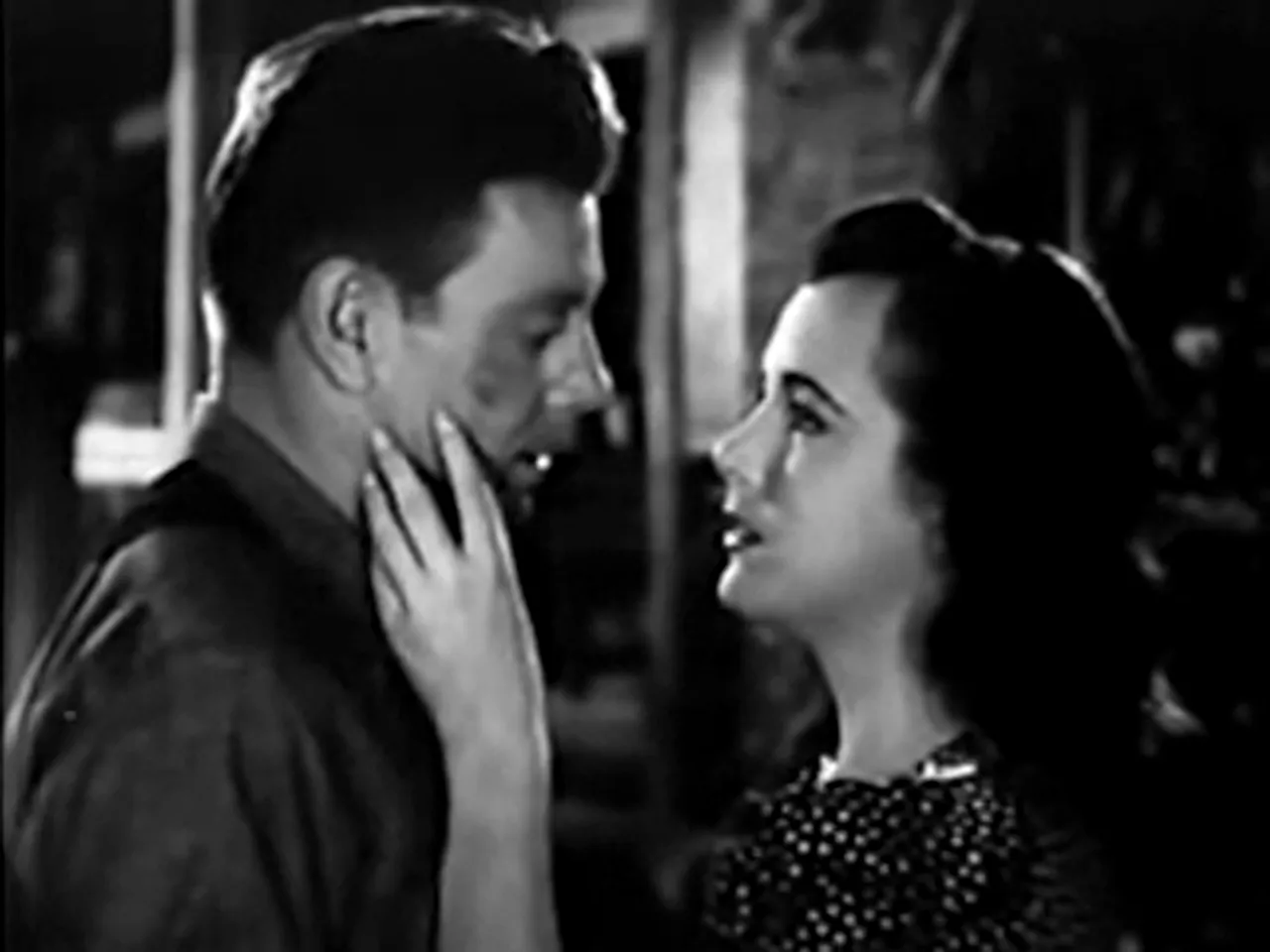
Recommended viewing and audience
This film noir movie is recommended for students of the genre who seek to broaden their understanding beyond the familiar urban classics. It will reward viewers who appreciate character-driven dramas and who want to explore how noir elements can inhabit quotidian spaces. For aficionados of classic cinema, For You I Die is a good case study in how economy of means—limited runtime, focused cast, simple settings—can nonetheless produce a resonant and humane film.
Those who teach or study film will find value in comparing this picture to more archetypal noirs. The film’s subdued style makes differences of tone and theme more apparent, which is useful for understanding noir as a spectrum rather than a monolith. For general audiences, the picture offers a compact, emotionally satisfying story that carries a moral weight disproportionate to its scale.
Final assessment: A film noir movie with a beating heart
For You I Die stands as an intelligent, compassionate specimen of the film noir movie. It refuses to reduce its characters to caricatures of sin and instead insists on the complexity of motive and the possibility of redemption. The film’s strength lies in its humane vision: a roadside diner, a small community, and a few decisive acts of care are shown to possess the power to alter lives. For a viewer seeking a film noir movie that combines suspense with sentiment—and cynicism with hope—this film offers a rewarding experience.
To conclude, For You I Die demonstrates that the film noir movie can be as much about the saving power of ordinary people as it is about the bleakness of crime. In its restrained direction, attentive performances, and moral gravity, the film affirms the cinematic possibility that kindness and courage coexist with danger and regret. That balance makes it not merely a period artifact but a film that continues to speak to contemporary concerns about identity, community, and moral choice.
